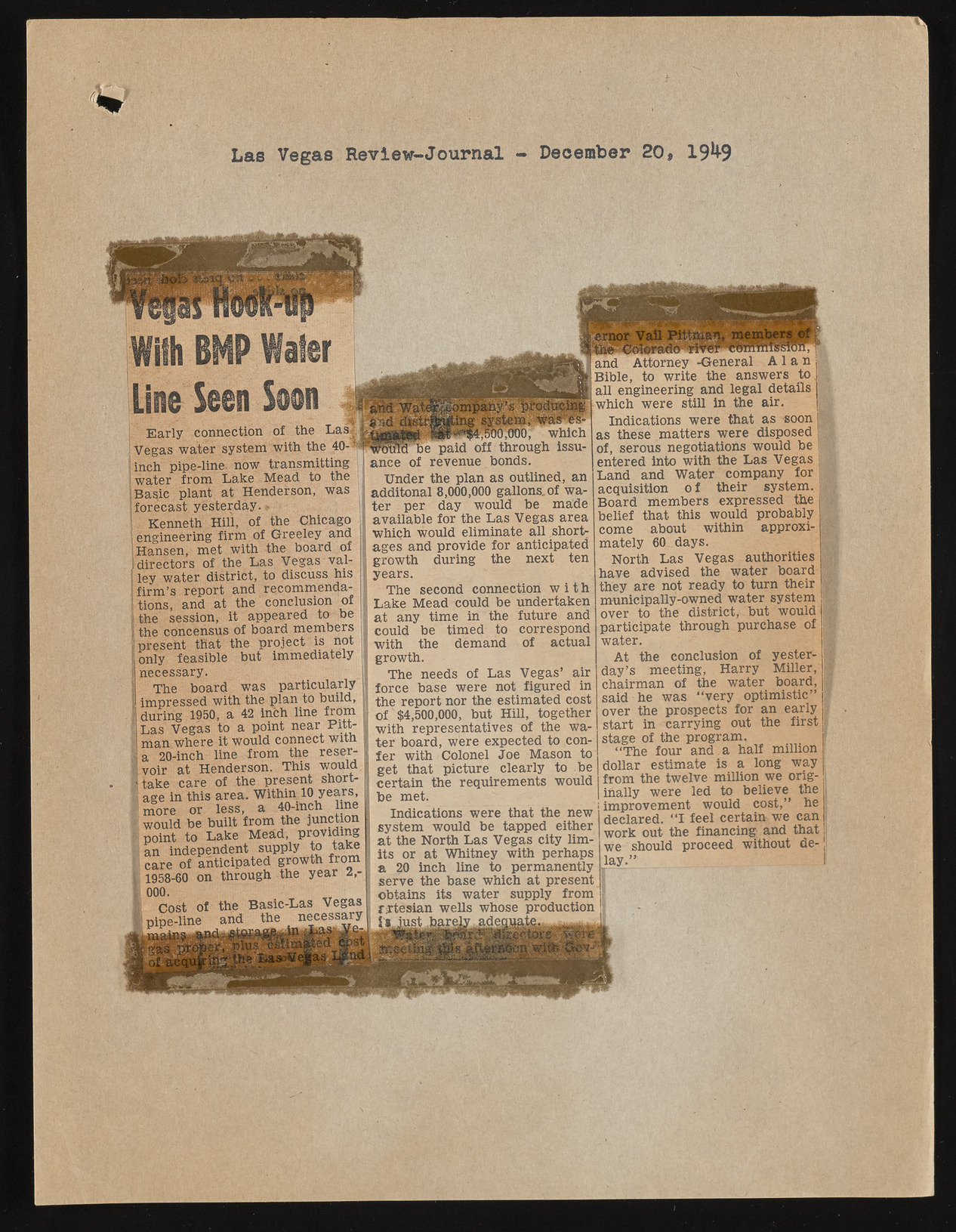Copyright & Fair-use Agreement
UNLV Special Collections provides copies of materials to facilitate private study, scholarship, or research. Material not in the public domain may be used according to fair use of copyrighted materials as defined by copyright law. Please cite us.
Please note that UNLV may not own the copyright to these materials and cannot provide permission to publish or distribute materials when UNLV is not the copyright holder. The user is solely responsible for determining the copyright status of materials and obtaining permission to use material from the copyright holder and for determining whether any permissions relating to any other rights are necessary for the intended use, and for obtaining all required permissions beyond that allowed by fair use.
Read more about our reproduction and use policy.
I agree.Information
Digital ID
Permalink
Details
More Info
Rights
Digital Provenance
Publisher
Transcription
Las Vegas Review-Journal - December 20, 19^9 Line Seen Seen J Early connection of the Las Vegas water system with the 40-*i I inch pipe-line, now transmitting j j water from Lake Mead to the jBa^ic plant at Henderson, was ; forecast yesterday.* $ | Kenneth Hill, of the Chicago j engineering firm of Greeley and ! Hansen, met with the board of i directors of the Las Vegas val-jley water district, to discuss his firm’s report and recommenda- ! tions, and at the conclusion of i the session, it appeared to be * the concensus of board members present ttiat the project is not only feasible but immediately necessary. The board was particularly impressed with the plan to build, during 1950, a 42 inch line from Las Vegas to a point near Pitt-man where it would connect with a 20-inch line from the reser- , voir at Henderson. This would I take care of the present short-1 1 age in this area. Within, 10 years, I ? more or less, a 40-inch line I would be built from the junction I point to Lake Mead P r id in g 1 an independent supply to take I care of anticipated growth from 1 1958-60 on through the year 2,- I 000. Cost of the Basic-Las Vegas d pipe-line and the necessary ind W at^pdm p^ |p*P dS w ing r?«id tfistr|j&ing sifsiiete,J*# a rW iifrtaMrt a P -<*$4.500.000. which ’WBBKTlj'e paid off through issuance of revenue bonds. Under the plan as outlined, an additonal 8,000,000 gallons.of water per day would be made available for the Las Vegas area whiQh would eliminate all shortages and provide for anticipated growth during the next ten years. The second connection w i t h Lake Mead could be undertaken at any time in the future and could be timed to correspond with the demand of actual growth. The needs of Las Vegas’ air force base were not figured in the report nor the estimated cost of $4,500,000, but Hill, together with representatives of the water board, were expected to confer with Colonel Joe Mason to get that picture clearly to be certain the requirements would be met. Indications were that the new system would be tapped either at the North Las Vegas city limits or at Whitney with perhaps a 20 inch line to permanently serve the base which at present obtains its water supply from frtesian wells whose production .ba.reiy^a.do i l i'/ernor-.Vjau- M ttflpw m em be l and Attorney -General A 1 a n j Bible, to write the answers to all engineering and legal details which were still in the air. Indications were that as soon as these matters were disposed of, serous negotiations would be i entered into with the Las Vegas j Land and Water company for j acquisition o f their system. Board members expressed the belief that this would probably come about within approximately 60 days. North Las Vegas authorities have advised the water board they are not ready to turn their municipally-owned water system over to the district, but would participate through purchase of water. At the conclusion of yesterday’s meeting, Harry Miller, chairman of the water board, said he was “ very optimistic” over the prospects for an early start in carrying out the first H stage of the program, “ The four and a half million I dollar estimate is a long way from the twelve million we orig- I ihally were led to believe the • improvement would cost,” he declared. “ I feel certain we can work out the financing and that we should proceed without delay.”

